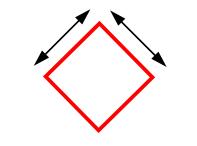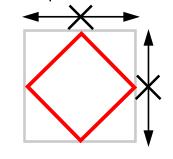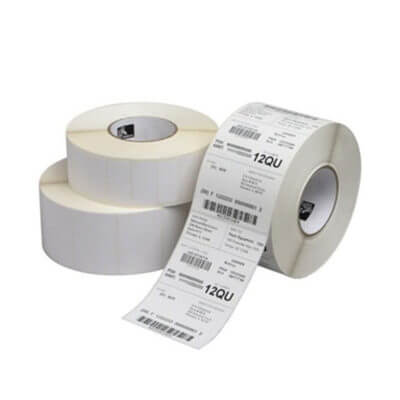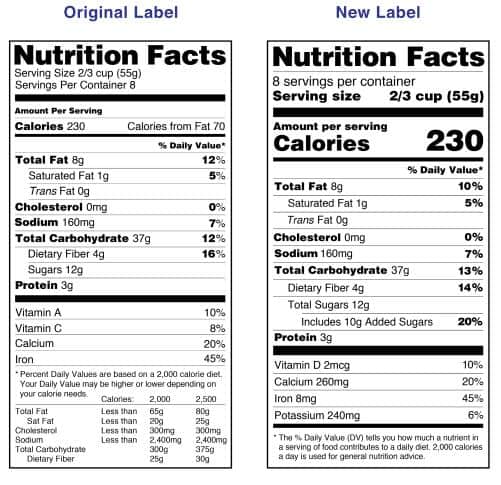A hazard pictogram is a pictorial presentation to communicate information on the hazard concerned (see also the definition provided in CLP Articles 2(3) and 31(2)). According to CLP Article 19, the classification of a substance or mixture determines the hazard pictograms that have to be displayed on a label. Information on the assignment of hazard pictograms to specific hazard classes and categories/differentiations can also be found in Annex V to CLP.
Currently, there are nine different pictograms. While normally only one pictogram is assigned to an individual hazard class or category, a few hazard differentiations have to carry two pictograms, namely substances and mixtures classified as self-reactive Type B or as organic peroxide Type B (see also the below sections). It should also be noted that some pictograms cover several hazard classes and categories.
Shape, colour and dimensions
The colour and presentation of a label must allow the hazard pictogram and its background to be clearly visible. Hazard pictograms must be in the shape of a square set at a point, i.e. they must appear as a diamond shape when the label is read horizontally, and must have a black symbol on a white background with a red frame. The exact type of red, i.e. the Pantone colour number, is not defined, and labellers are free to use their discretion.
Each hazard pictogram must cover at least one fifteenth of the minimum surface area of the label dedicated to the information required by CLP Article 17, but the minimum area of the pictogram must not be less than 1 cm2. The minimum dimensions of labels and pictograms are given in Table 1.3 of Annex I to CLP. For pictograms, these minimum dimensions refer to the sides of the red frame of the pictogram itself, and not to the sides of the virtual square within which the pictogram is placed:
Below is the exclamation mark (pictogram GHS07) as an example pictogram. It is assigned to various health hazard classes and categories of lower severity :

Printable pictograms are provided free of charge for download at http://www.unece.org/trans/danger/publi/ghs/pictograms.html
Precedence rules
For substances and mixtures classified for more than one hazard, several pictograms may be required on the label. In such cases, the applicability of the precedence rules set out in CLP Article 26 need to be checked. As a general rule, the pictograms that reflect the most severe hazard category of each hazard class must be included on the label.
This would also apply where a substance has both a harmonised and a non-harmonised (i.e. self-) classification (see CLP Article 26(2)).
Further to this, the CLP Regulation sets out precedence rules relating to particular hazard pictograms and classifications:
For physical hazards
if the label carries the pictogram GHS01 (exploding bomb), then GHS02 (flame) and GHS03 (flame over circle) are optional …

… except in cases where more than one pictogram is compulsory, namely for substances and mixtures classified as self-reactive Type B or as organic peroxide Type B (see Annex I to CLP);
For physical and health hazards
if the label carries the pictogram GHS02 (flame) or GHS06 (skull and crossbones), then GHS04 (gas cylinder) is optional:

For health hazards
if the label carries the pictogram GHS06 (skull and crossbones), then GHS07 (exclamation mark) must not appear:

For health hazards, if the label carries the pictogram GHS05 (corrosion), then GHS07 (exclamation mark) must not be used for skin or eye irritation…
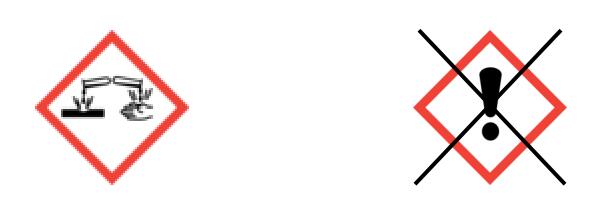
… but still has to be used for other hazards.
For health hazards, if the label carries the pictogram GHS08 (health hazard) for respiratory sensitisation, then GHS07 (exclamation mark) must not be used for skin sensitisation or for skin or eye irritation …
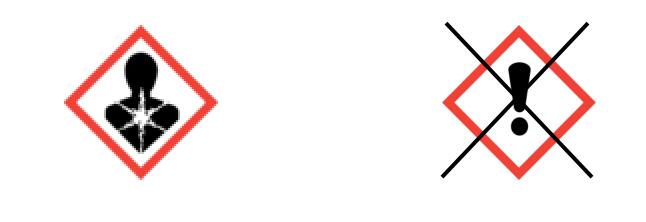
… but still has to be used for other hazards.
In case a substance or mixture is assigned the supplemental hazard statement EUH071 (“Corrosive to the respiratory tract”), a corrosivity pictogram (GHS05) may be assigned (see Note 1 of Table 3.1.3 in Annex I to CLP). Where this is done, the pictogram GHS07 (exclamation mark) for STOT SE category 3 (respiratory tract irritation) must be omitted from the label, as well as the hazard statement H335 (“May cause respiratory irritation”).
For substances and mixtures that have to be labelled in accordance with both the CLP Regulation and the rules on the transport of dangerous goods, the CLP pictogram(s) may be omitted from the label on the outer or single packaging when the CLP pictogram(s)
and the pictogram(s) for transport of dangerous goods relate to the same hazard (see section 5.4 of this guidance document).
Blank pictograms
When preparing hazard labels, a common practice is to use pre-printed label stocks of the diamonds (the label background is printed first before it is overprinted with the specific label information). This may result in labels with a number of pre-printed empty diamonds, not all of which may then be needed by a company that has purchased pre-printed labels. In such a situation, one or more pre-printed diamonds may have to beleft empty.
The CLP Regulation does not explicitly forbid blank diamonds. However, any information given in addition to the minimum mandatory labelling must not contradict or cast doubt on the mandatory label information (CLP Article 25(3)), while empty red frames might
raise questions. If empty red frames are unavoidable, it is recommended to cover them up with a solid overprint which blacks them out completely (see the example in Figure1).
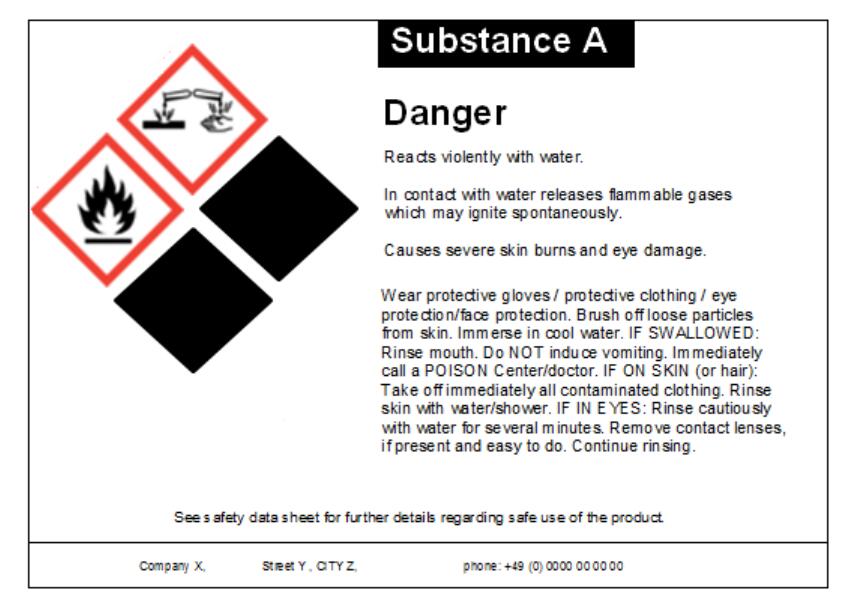
Blacking-out of empty diamonds aims to avoid the impression that relevant hazard symbols may have been left off the label through a printing mistake.
Please refer also to CLP FAQ ID=240 available at https://echa.europa.eu/support/qas-support/qas.

